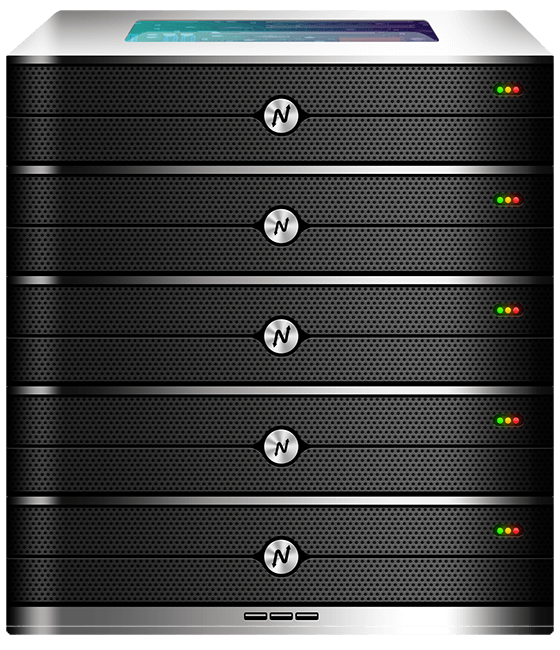Choosing the right domain name for non profit organization matters more than you think. A clear, trusted domain helps donors, volunteers, and partners find you, supports credibility, and improves fundraising and outreach. In the first 100 words: a memorable domain builds trust and discoverability, and pairing it with Indian hosting gives cost-effectiveness, low latency across Asia, security, and easy scalability for a global audience. This guide walks you through name selection, the pros and cons of tld org versus other extensions, registration in India, ongoing protection, and recommended XenaxCloud plans for nonprofits.
- 1 Website Host
- 15GB SSD Storage
- 100GB Bandwidth
Why the right domain name matters

A strong domain name for non profit organization does three practical things. First, it makes your mission obvious at a glance. Second, it supports email credibility; donors are more likely to open messages from an address that matches your domain. Third, it helps search engines and users associate your brand with your cause.
When you choose a domain, prefer clarity over cleverness. Short, readable names are easier to remember and type. If your nonprofit is location-specific, consider including a city or region keyword to help local discovery. If your organization already has a well-known acronym, secure the acronym domain and common variants to prevent impersonation.
TLD choice affects perception. The tld org is widely recognized for nonprofits and mission-driven groups. Many donors expect a .org address, and it can offer an immediate trust signal. Still, org and com each have roles: .com is neutral and commercial-friendly, while .org signals nonprofit intent. We’ll compare both options in depth below, so you can pick the best domain name for non profit organization based on strategy and availability.
How to pick the perfect domain name for your nonprofit
Picking a domain name for your nonprofit involves a few simple rules that prevent headaches later.
Keep it short and descriptive. A domain name for non profit organization should be 2–4 words at most and avoid punctuation. Use plain words that reflect your mission. If your name is long, consider a concise branded alternative.
Avoid trademarked terms. Check trademark databases and basic searches to avoid legal trouble. If your preferred name is taken, look for a clear alternative rather than a confusingly similar option.
Use keywords carefully. Including a keyword like “education” or “relief” can aid clarity, but do not stuff keywords. The domain should still read naturally.
Plan for future growth. If you start local and plan to expand internationally, avoid hyper-local names unless that is your permanent focus.
Finally, secure common misspellings and related TLDs to protect your brand. For many nonprofits, registering the .org and the .com versions reduces phishing risk and preserves donor trust.
tld org vs org and com — which is best for nonprofits?
When deciding between tld org and org and com, think about audience expectation and branding.
tld org: Historically the home of nonprofits, advocacy groups, open-source projects, and charities. It signals mission-driven work and is often the first place donors look. If credibility and mission alignment are top priorities, a tld org is a strong choice for your domain name for non profit organization.
org and com comparison: The phrase org and com sums up the practical trade-offs. A .com domain is universal, often easier for general audiences to remember, and sometimes better for fundraising platforms or commerce features. However, .com can be perceived as commercial. Using both can be ideal: primary site on .org and redirects from .com preserve user intent and prevent impersonation.
If your nonprofit runs revenue-generating programs or an online store, you can use .com subdomains or a separate .com site while keeping the primary mission content on .org to retain trust. The core idea is to choose the TLD that best aligns with your mission and audience expectation and to protect related domains to prevent confusion.
Registering your domain in India — steps and tips
Registering a domain name for non profit organization in India is straightforward, but a few best practices help avoid common pitfalls.
Search availability: Use a reputable registrar to check if the domain is free. If the desired name is taken, consider slight variations or securing the relevant acronym.
Choose the right registration term: Domains can be registered for multiple years. For organizations, registering for several years is a simple way to show stability and reduce renewal risk.
Enable WHOIS privacy and proper contacts: Keep administrative contacts current and enable privacy if personal details should be hidden.
Enable auto-renew and confirm billing: For nonprofits that may rely on volunteer admins, auto-renew avoids accidental expiry.
Consolidate domain and hosting management: Registering and hosting in a single account, for example via XenaxCloud’s Domains page, simplifies renewals and DNS setup. This centralization makes it easier to manage email, SSL, and DNS records when you launch fundraising campaigns or event microsites. Use the Domains page to register and manage your nonprofit domain: https://xenaxcloud.com/domain/
Technical essentials: email, SSL, DNS, and security
A domain name for non profit organization is only useful if your site and email work securely.
Email: Use the domain for official emails like donations@yourorg.org and admin@yourorg.org. Branded email improves deliverability and donor trust.
SSL: Install TLS/SSL to serve your site over HTTPS. Donors need to see secure checkout and donation pages; browsers flag non-HTTPS sites as “not secure.”
DNS and records: Configure MX records for email, SPF, DKIM and DMARC for deliverability and to reduce spoofing. Set TTL values judiciously to speed DNS changes during migrations.
Backups and disaster recovery: Use automated backups and store them offsite. If your domain name for non profit organization hosts critical donor databases, backups are non-negotiable.
Security: Enable two-factor authentication for registrar and hosting accounts. Monitor domain status to detect unauthorized transfers.
Choosing the right hosting plan for nonprofits
Nonprofits have varied hosting needs depending on traffic, donation processing, and content type. Here’s a simple decision guide to select a XenaxCloud plan that matches your nonprofit’s stage.
Starter and small sites: For a basic informational site or small fundraising pages, Mini Hosting — Professional — 1 Website, 5GB Storage, 20GB Bandwidth, $1.20 is very cost-effective and easy to manage. It supports a single domain name for non profit organization and includes the basics for a secure site.
Growing organizations: If you expect higher traffic during campaigns or run multiple microsites, Shared Hosting — Silver — 1 Website, 15GB Storage, 100GB Bandwidth, $1.79 or Gold — 3 Websites, 25GB Storage, 500GB Bandwidth, $2.39 can host multiple pages or landing sites while keeping costs low.
Performance and control: For heavy custom apps, membership systems, or high concurrent traffic during drives, choose a KVM VPS like KVM VPS 1 — 2 Vcore CPU, 8GB RAM, 40GB Storage, 2TB Bandwidth, $5.99 to get dedicated resources and root access.
If you plan to scale globally, integrate CDN, and use a mix of shared and VPS resources to balance cost, speed, and uptime. Check the XenaxCloud VPS page for full specs: https://xenaxcloud.com/vps-server/
Speed, uptime, and security advantages of Indian hosting
Hosting your domain alongside Indian-edge infrastructure benefits nonprofits with Asia-focused audiences.
Cost-effectiveness: Indian hosting provides a competitive resource-to-cost ratio so nonprofits can allocate more budget to programs instead of infrastructure.
Low latency and regional speed: If your donors or beneficiaries are in Asia, India-based servers deliver faster load times and smoother interactions.
Security and compliance: Modern Indian data centers adhere to international security standards and offer features like DDoS protection and secure backups.
Scalability: Quick provisioning and multiple KVM VPS options let you scale during major donation drives without long lead times.
Taken together, these make Indian hosting a reliable choice to support and protect your domain name for non profit organization while keeping operational costs manageable.
Use cases and examples: how nonprofits use domains effectively
Microsites for campaigns: Use campaign-specific subdomains like campaign2025.yourorg.org to host focused fundraising efforts while keeping your primary domain for organizational info.
Volunteer portals: A separate subdomain with secure login for volunteers improves operations and keeps member data isolated.
Donation pages: Secure, SSL-protected donation pages on a canonical domain reduce friction and build trust.
Resource hubs: Use the domain to host reports, press kits, and learning resources that stakeholders can cite and share.
In all cases, align your domain naming strategy with communications plans. A consistent naming convention across projects protects your brand and helps users recognize official content.
Comparison: Indian servers vs US, Canada, Germany, UAE
| Feature | Indian Servers | US/Canada | Germany | UAE |
|---|---|---|---|---|
| Latency to Asia | Low | High | Moderate | Low-Moderate |
| Cost-effectiveness | High | Varies | Moderate | Moderate |
| Support & Provisioning | Fast, 24/7 | Fast | Business hours | Business hours |
| Security & Compliance | Strong, regional compliance | Strong | Strong | Good |
| Best for | Asia-focused nonprofits | North American audiences | European audiences | Middle East audiences |
This table shows why Indian hosting often makes sense for nonprofits operating in Asia and why it supports a reliable domain name for non profit organization.
Managing costs and governance for nonprofit domains
Nonprofits should practice modest governance to protect domains and control costs.
Budget for multi-year registrations and SSL renewals. Use auto-renew and a dedicated billing account to avoid accidental expiry.
Use role-based access for domain and hosting accounts. Assign a backup admin and document processes so volunteers changes do not cause disruption.
If you rely on paid services like premium DNS or CDN during high-traffic events, negotiate nonprofit pricing or consider sponsorships.
Keep an eye on offers and promotions to reduce costs — XenaxCloud posts current promotions on the Offers page: https://xenaxcloud.com/offers
FAQs
What is the difference between Indian VPS and foreign VPS?
Indian VPS typically offers lower latency for Asian audiences and competitive pricing; foreign VPS may be preferable for local audiences in those regions.
Can Indian servers handle global website traffic?
Yes — with CDN integration and proper load balancing, Indian servers can efficiently serve global visitors while keeping regional performance strong.
Is Indian hosting cost-effective for international users?
Often yes; Indian hosting provides good value-per-resource for many use cases, especially for organizations targeting Asia.
How reliable is XenaxCloud hosting?
XenaxCloud provides NVMe-backed servers, redundant networking, automated backups, and 24/7 support to maintain reliability for nonprofit sites.
How to choose the right server for my business?
Assess expected traffic, concurrency, technical control, and budget; start on a shared or mini plan and upgrade to KVM VPS as needs grow.
Should my nonprofit register both .org and .com?
If budget allows, registering both protects your brand and prevents impersonation; primarily use .org for mission credibility.
How many years should I register my nonprofit domain for?
Registering for 2–5 years shows stability and reduces renewal risk, but budget and administrative needs should guide your choice.
Conclusion
Choosing and protecting a domain name for non profit organization is a strategic step that affects trust, discoverability, and fundraising success. Prioritize a short, descriptive name, prefer tld org for nonprofit credibility, and consolidate domain and hosting management for simpler renewals and security. For many nonprofits, starting with Mini Hosting — Professional — 1 Website, 5GB Storage, 20GB Bandwidth, $1.20 or Shared Hosting — Silver — 1 Website, 15GB Storage, 100GB Bandwidth, $1.79 offers the right balance of affordability and capability. For advanced control, KVM VPS 1 — 2 Vcore CPU, 8GB RAM, 40GB Storage, 2TB Bandwidth, $5.99 provides dedicated resources.
Register and manage your nonprofit domain at XenaxCloud’s Domains page: https://xenaxcloud.com/domain/ to keep DNS, email, and hosting together. Remember to set auto-renew, enable SSL, and assign backup administrators. XenaxCloud offers competitive plans, helpful support, and a 15-day money-back guarantee so you can test services risk-free. Secure your domain name for non profit organization today and focus on mission impact, not infrastructure.






